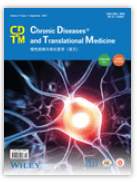Magnetic resonance imaging-guided focused ultrasound thalamotomy launch with remote telemedicine international proctorship

Chronic Diseases and Translational Medicine https://doi.org/10.1002/cdt3.92
Background
COVID-19 limitations have hindered the implementation of new technologies by preventing proctors from coming to the site. We share our first experience of magnetic resonance imaging (MRI)-guided focused ultrasound (MRgFUS) treatment with an international remote online proctorship, and develop and evaluate the methodology of remote MRgFUS proctorship.
Methods
This single-center, nonrandomized controlled prospective study included 94 patients: 27 with essential tremor (ET) and 67 with tremor-dominant Parkinson's disease (PD). The coming of proctors was impossible, so we arranged for the remote participation of proctors from the United Kingdom, Spain, and Israel. A total of 38 patients (40.4%) received telemedicine-proctored treatment (proctor group) and 56 received their treatment independently (solo group). We used the Clinical Rating Scale for Tremor (CRST) for ET patients and the Unified Parkinson's Disease Rating Scale (UPDRS) Part III for PD patients.
Results
In patients with ET, success rates were 81.8% (proctor group) and 100% (solo group) (p = 0.22). CRST reduction on the treated side was 71.43% [65.83%; 80.56%] (proctor group) versus 60.87% [53.99; 79.58] (solo group) (p = 0.19). None of the patients showed worsening of tremors within 1 year. In patients with PD, the success rates were 92.6% (proctor group) and 100% (solo group) (p = 0.08). The UPDRS Part III improvement was 30.1% (proctor group) versus 39.9% (solo group) (p = 0.003). The 1-year recurrence rate was 40% (proctor group) and 17.5% (solo group) (p = 0.04). No complications were observed at 6 months.
Conclusions
We developed a feasible and safe methodology for telemedicine remote online-proctored MRgFUS treatment. No significant difference was observed between the solo and developed remote proctor protocols in terms of complication rate, effect, and long-term results; however, UPDRS Part III improvement was better in the PD solo group. This study demonstrated that the MRgFUS international proctorship can be performed successfully remotely.
Highlights
-
This study proposes the introduction of advances in information technology to launch and conduct online remote magnetic resonance imaging-guided focused ultrasound neurosurgery because of the proctor's absence owing to COVID-19 restrictions.
-
We developed a working protocol for remote proctorship that can be used in the future and assessed its effectiveness and safety.